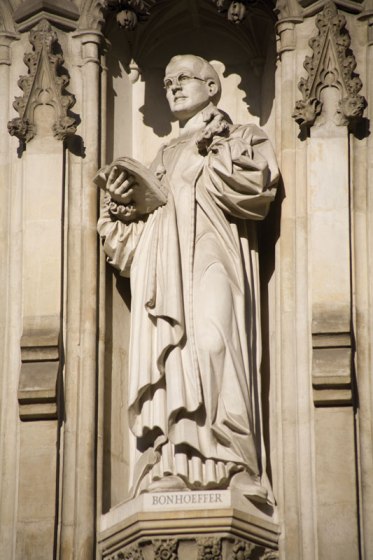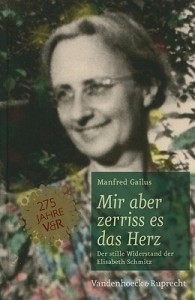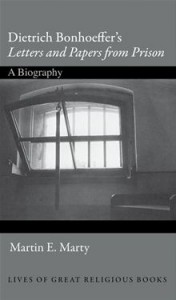ACCH Quarterly Vol. 17, No. 3, September 2011
Review Article: The Missionary Impulse of the Early Twentieth Century
Johanna M. Selles, The World Student Christian Federation 1895-1925. Motives, Methods and Influential Women, (Eugene, Oreg.: Pickwick Publications, 2011), xviii + 294 Pp., ISBN 978-1-60899-508-0.
Brian Stanley, The World Missionary Conference, Edinburgh 1910. Studies in the History of Christian Missions (Grand Rapids, Mich.: W.B. Eerdmans, 2009), xxii + 352 Pp., ISBN 978-0-8028-6360-7.
By John S. Conway, University of British Columbia
The second half of the nineteenth century saw a remarkable surge of Christian energies, fervour and organisational developments, especially in the Protestant churches of Europe and North America. This sprang from, or was at least parallel to, the momentous spread of technical and scientific achievements, which formed the basis for the political, economic and imperialist expansions of those years. At the same time, the rapid and world-wide spread of travel opportunities and the increase in living standards and disposable wealth allowed for a wider discovery and knowledge of distant lands hitherto unknown or only occasionally visited. The resulting optimistic climate of opinion led in many Protestant churches to a confident pursuit of expansion, particularly in the field of overseas missions. The biblical precept to spread the gospel to the ends of the earth was now framed in the popular slogan: “the Evangelisation of the World in this Generation.” In the 1880s and 1890s this goal seemed to many Protestants to be entirely achievable, and an unprecedented number of eager young Christians resolved to devote their lives to this noble purpose. To later observers, this over-confident belief in the superiority of Christianity and in the capacity of these missionaries to bring its message to “lesser breeds without the law” now seems recklessly misconceived. But at its apogee, a hundred years ago, this hope that a new age of gospel triumphs was dawning was widely shared even by sober and experienced ecclesiastical leaders. It was the religious equivalent to the same kind of ambitious expectations, which, in the political sphere, in the same period, had justified the expansion of their colonial rule by the leaders of the western European nations and of the United States, to cover so much of the surface of the globe.
These two books under review each touch on specific aspects of this momentous endeavour. Johanna Selles draws attention to the contributions made by women, which she feels have been neglected in the earlier ecclesiastical histories written by churchmen. But women played a significant part in this mission work, both at home and abroad. They were recruited from the growing number of participants in women’s higher education, who were no longer limited to a future of domesticity. Many of the universities and colleges where they had been trained were Christian foundations where education and piety were closely associated. So they eagerly joined missionary societies, or societies to promote temperance or other social reforms. Voluntary service with a church-related organisation was a socially approved activity for women. At the same time, since they were blocked by their gender from seeking ordination, such service provided an outlet for their undoubted idealism, especially for many younger women.
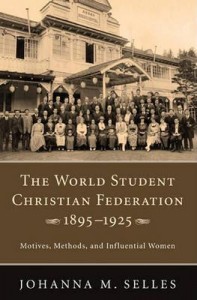 Selles concentrates her attention on one of these groups, the World Student Christian Federation, founded in 1895, which was in fact the first international student group of its kind, seeking to build a stage for Christian internationalism through the witness of national members and societies. It sprang from the initiative and enthusiasm for expanded Christian evangelism, especially in the Protestant colleges and universities in North America and Britain, but extending also to Scandinavia and Germany. Loosely formed as a federation, because of the widely differing religious traditions, national backgrounds and languages, the WSCF provided an international framework for the holding of conferences and campaigns, many of which focussed on recruitment for missionary service overseas.
Selles concentrates her attention on one of these groups, the World Student Christian Federation, founded in 1895, which was in fact the first international student group of its kind, seeking to build a stage for Christian internationalism through the witness of national members and societies. It sprang from the initiative and enthusiasm for expanded Christian evangelism, especially in the Protestant colleges and universities in North America and Britain, but extending also to Scandinavia and Germany. Loosely formed as a federation, because of the widely differing religious traditions, national backgrounds and languages, the WSCF provided an international framework for the holding of conferences and campaigns, many of which focussed on recruitment for missionary service overseas.
In its first thirty years, the WSCF was led, as its General Secretary, by the well-known American evangelist John R. Mott, who was also a leading figure in the international YMCA, and, as we shall see, became the best-known champion of international evangelisation. But he was supported loyally and effectively by numerous women assistants. Selles gives us a valuable account of these women’s contributions, particularly of Mott’s closest associate, the British graduate Ruth Rouse. She proved to be both competent and highly impressive, and ably seconded Mott’s campaigns, especially appealing to women students on campuses around the world. But, as some later commentators noted, she could not be called an ardent feminist.
Mott’s recruiting style was unique. He travelled the world almost incessantly in great style. Arriving at a university city, he would stay in the best hotel and arrange for the student audience to be assembled in the largest hall or church. His appeal to the students to join in the task of the evangelisation of the world ended in an inspiring altar call. Those who responded were invited to come for an interview in Mott’s hotel on the next day. As one of them told me, if Mott was suitably impressed by the candidate’s sincerity and qualifications, he would end the interview by saying: “The Lord has need of your services in Prague (or other destination). Here is your ticket”.
Ruth Rouse came to be the essential connecting link between the workers in the field and the policy makers at home. As more and more Christian student organisations sprang up on the local level, so the coordination of their efforts became a vital prerequisite for success. She shared the vision of Christian internationalism and ecumenism, coupled with the passion for social reform and confidence in women’s capabilities which were hallmarks of the WSCF’s witness. The WSCF’s principal activities lay in organising international conferences, providing speakers to work with local units, and issuing publications which linked such groups to the others. All were imbued with a strong missionary emphasis, which in turn was not free from the assumptions of Christian cultural superiority.
To begin with, the WSCF’s emphasis was on personal evangelism and individual conversion. But, from the turn of the century, increasing attention was given to wider social and international issues, following the new theology of the social gospel. And after the First World War, which shattered so many illusions and expectations, a much more critical tone was heard especially from the younger members. Selles’ account finishes with the end of Mott’s long term of office, after a new generation demanded a different and less triumphalistic approach.
In retrospect, the World Missionary Conference, held in Edinburgh in 1910, can be seen as the high point of Mott’s career. At the age of forty-five, he had already served for fifteen years with the WSCF and even longer had held leadership positions in the World’s Alliance of YMCAs. He had travelled the world to all sorts of missionary outposts, and had gained the support of numerous wealthy American business magnates who gave him unprecedented amounts for his various good causes. He had early on been convinced that the time was ripe for the Christian message to be spread around the world, taking advantage of all the means provided by modern discoveries. Indeed the urgency of this cause was his continuing and vital concern. But two major obstacles existed. One was the lack of recruits. Hence Mott’s incessant campaigns, particularly among students in North American and western European universities. The other major handicap came from denominational rivalries and conflicts. By the turn of the century, Mott and other leaders in the missionary movement were convinced that their great task of evangelising the world could only be realised if all the churches collaborated, or at least overcame their frequently-displayed hostility towards each other. Doctrinal rivalries derived from centuries-old theological disputes could not be allowed to stand in the way of saving the unconverted. If the churches recognised their opportunity to collaborate, then the triumph of the gospel world-wide could be effectively achieved. As Mott said, “This is a decisive time for Christian missions.” It was also a time of exalted ambitions and confident expectations for the expansion and victory of the Christian missionary endeavour.
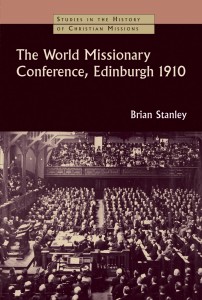 Brian Stanley’s scholarly and valuable account of the Edinburgh Conference begins by correcting a widely-held interpretation, namely that it was the beginning point of the ecumenical movement which grew so notably among the churches in the twentieth century. But Stanley rightly wants to place the emphasis on the missionary endeavours which the Conference fostered and recorded. In fact this was a decidedly Protestant and broadly evangelical gathering, along with a few High Church Anglicans, but no representatives from either the Catholic or Orthodox persuasions. The delegates were chosen from Protestant missionary societies rather than from the churches or denominations, with a preponderant attendance by Britons and North Americans. Only eighteen delegates were from Asia. A lone indigenous black delegate from Ghana represented Africa. All were however conscious that they were participating in an event which proposed to reshape the course of the world’s Christian history.
Brian Stanley’s scholarly and valuable account of the Edinburgh Conference begins by correcting a widely-held interpretation, namely that it was the beginning point of the ecumenical movement which grew so notably among the churches in the twentieth century. But Stanley rightly wants to place the emphasis on the missionary endeavours which the Conference fostered and recorded. In fact this was a decidedly Protestant and broadly evangelical gathering, along with a few High Church Anglicans, but no representatives from either the Catholic or Orthodox persuasions. The delegates were chosen from Protestant missionary societies rather than from the churches or denominations, with a preponderant attendance by Britons and North Americans. Only eighteen delegates were from Asia. A lone indigenous black delegate from Ghana represented Africa. All were however conscious that they were participating in an event which proposed to reshape the course of the world’s Christian history.
This over-confident optimism believed that the non-Christian world, especially in Asia, stood on the brink of a progressive transformation. The movement for reform and modernisation led by Christian elites would result from the ideological and financial power of western Christendom. This expectation was only heightened by the belief that the window of opportunity might not last. The necessity of action was all the more urgent. Stanley’s account vividly captures the mood of confident hope that such action could and would now begin to be taken.
Stanley’s description of the preparations and conduct of the Conference is both excellent and detailed. He pays deserved tribute to the organising skills of the youthful Scottish missions secretary, Joe Oldham, as well as to the charismatic leadership provided by Mott as Chairman. From the beginning they had decided that this was not to be an inspirational jamboree for missions enthusiasts, but a serious working conference by appointed experts. Eight high-level Commissions were appointed two years in advance which were to take soundings across the world’s mission fields and to report back on the most effective ways of promoting these missionary endeavours. But discussions on doctrinal questions were to be excluded. In the event, the Commissions’ questionnaires and subsequent replies formed the Conference’s most valuable contributions, which provide graphic evidence of the writers’ assumptions and expectations. The statistical surveys and the atlas of missions are particularly interesting. These reports can still be read with benefit.
Stanley’s account of the Conference itself is both precise and percipient. Most usefully, he gives names and dates for most of the prominent participants both in the Conference and in its preparatory Commissions. Drawing on these vast records, now deposited in libraries in Britain and the United States, he steers us through the thickets of ecclesiastical politics and theological controversies which arose before and during the Conference. The final achievement, he believes, was largely due to the skilful diplomacy and leadership of both Mott and Oldham, who formed a most effective trans-Atlantic team. His successfully evokes the atmosphere which captivated the one thousand men and two hundred women, most of them gray-haired but eager mission society or church leaders, drawn from all over the world. They became united in what proved to be ten days of mind-broadening excitement and devotional stimulation.
Stanley rightly pays attention to some of the Conference members’ critical views, such as those of the young Indian pastor who pleaded with the delegates to abandon their imperialistic attitudes, especially in their social relations with their converts. “You have given your goods to feed the poor. You have given your bodies to be burned. We also ask for love. Give us FRIENDS!” Stanley also gives the evidence that, although the principles of the Three Self-Movement for Missions (self-governing, self-supporting, self-propagating) had been accepted, in practice, in the field, such precepts were rarely followed. Many missionaries were fluent in justifying their reluctance to implement them.
Furthermore, Stanley does not overlook some of the Conference’s short-comings, such as the exaggerated expectations indulged in by some delegates, or the frequently expressed view that all other religions were precursors to, and would find their fulfilment, in Christianity. Particularly in the Conference’s Commission Four, dealing with “The Christian Message to non-Christian Religions,” the view was taken that all religious phenomena could be placed somewhere along a scale of progression, at the apex of which was of course Christianity. Stanley is rightly sceptical of this kind of progressive evolutionism. On the other hand, he is also critical of the arrogant assumptions held particularly by some Evangelicals who presumed that their version of Christianity with all its western cultural baggage was the only true one and should be thrust upon lesser races, who were expected to be eternally grateful. Such cultural and racial myopia was not uncommon even among those with extensive missionary experience. The planting of new Christian communities in all parts of the globe was of course the pre-eminent goal shared by all the delegates. But, predictably, the Conference deliberations did not challenge the existing situation in which the foreign missionaries exercised overall dominance, especially through their theological and financial controls. Or at best, they looked forward to a distant date when the indigenous churches would be able to stand on their own feet.
The triumphs of Christian internationalism which so many of the delegates predicted did not last long. The outbreak of the European war in 1914 destroyed the myth of Europe’s spiritual superiority. The slaughter of the trenches removed many of the generation of leaders who were to have carried the message of Edinburgh around the world. Instead the ideologies of nationalism and revolution quickly outmatched the discredited Christian creeds. The evangelisation of the world did not happen in that generation, nor in the expected manner. The claims of the Christian gospel had to be presented henceforward in a much humbler tone.
Subsequently, as the missionary movement’s impetus faded away, the legacy changed. As noted above, Edinburgh came to be reinterpreted, even by some of the leading participants such as Mott and Oldham, as the founding conference for Christian ecumenism. But the original assumptions of the missionary movement had had to be abandoned. The Edinburgh delegates had in fact displayed very little awareness of the new racial, political and theological issues which were to dominate the twentieth century, and radically to change the course of Christian history. But Stanley’s scholarly tribute to the devotion and piety of this earlier generation of missionaries serves to remind us that such gatherings as Edinburgh can leave an ambiguous legacy. It also should lead us to engage in deeper theological reflection on the Christian missionary task in the world of today.
